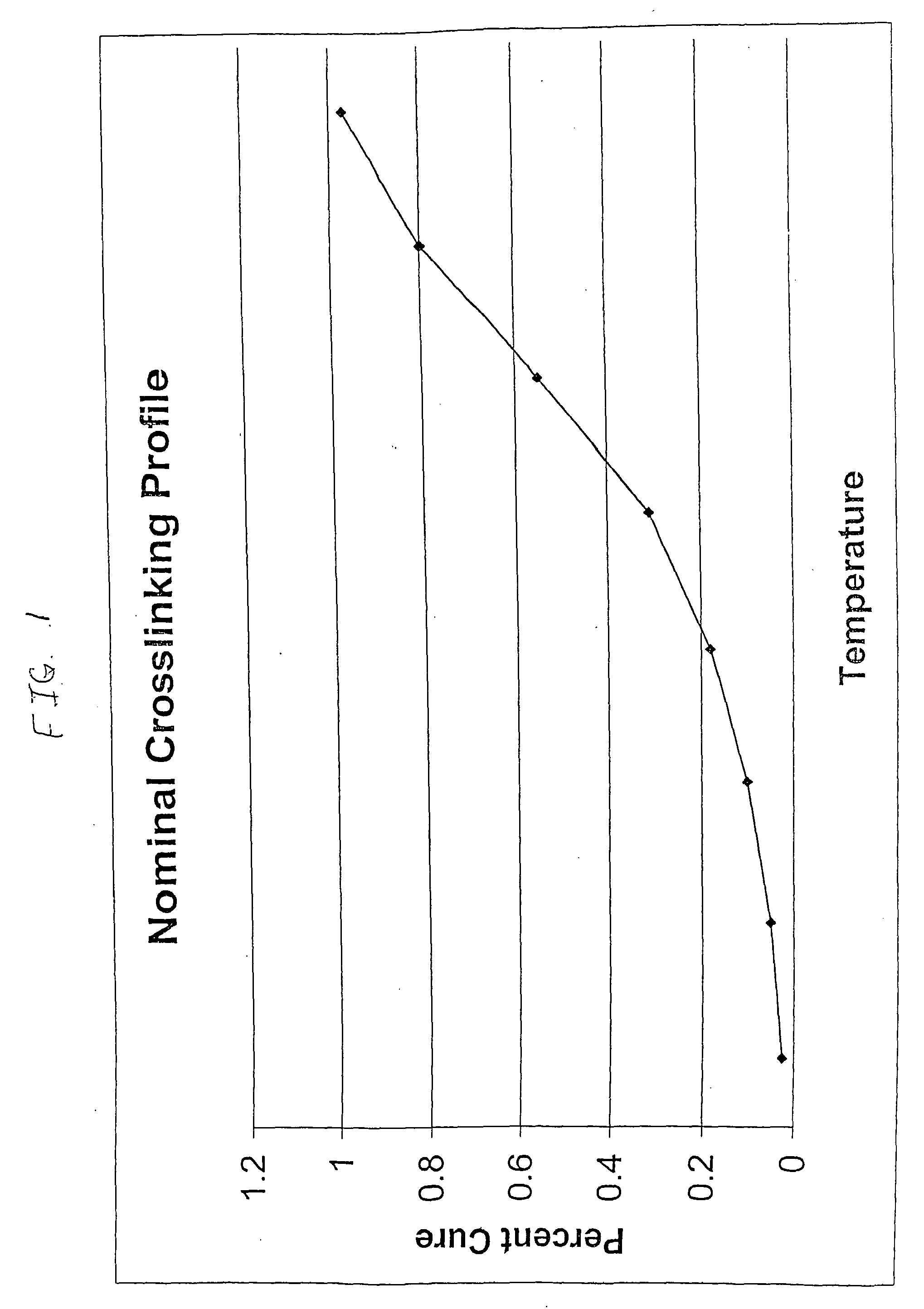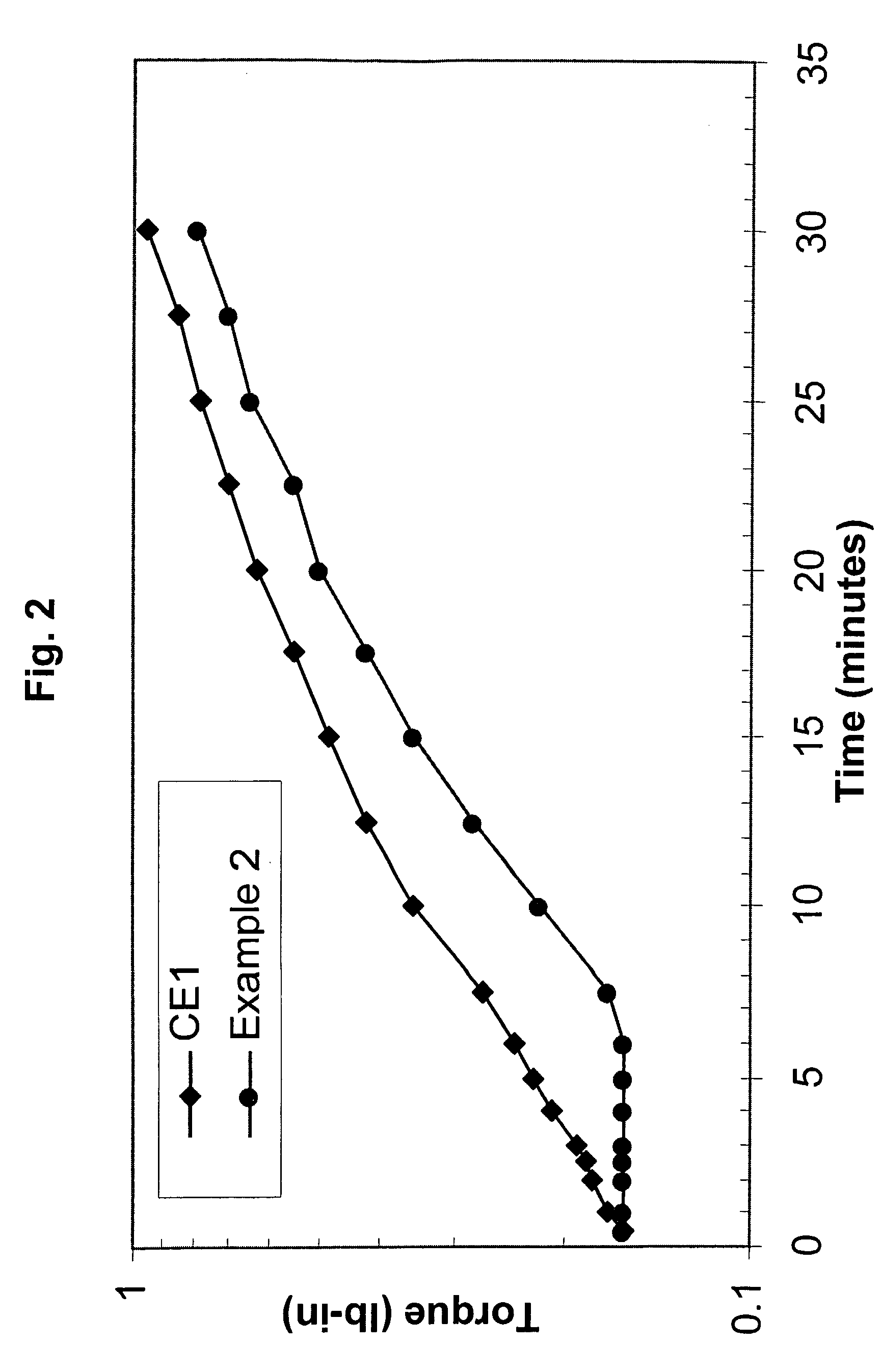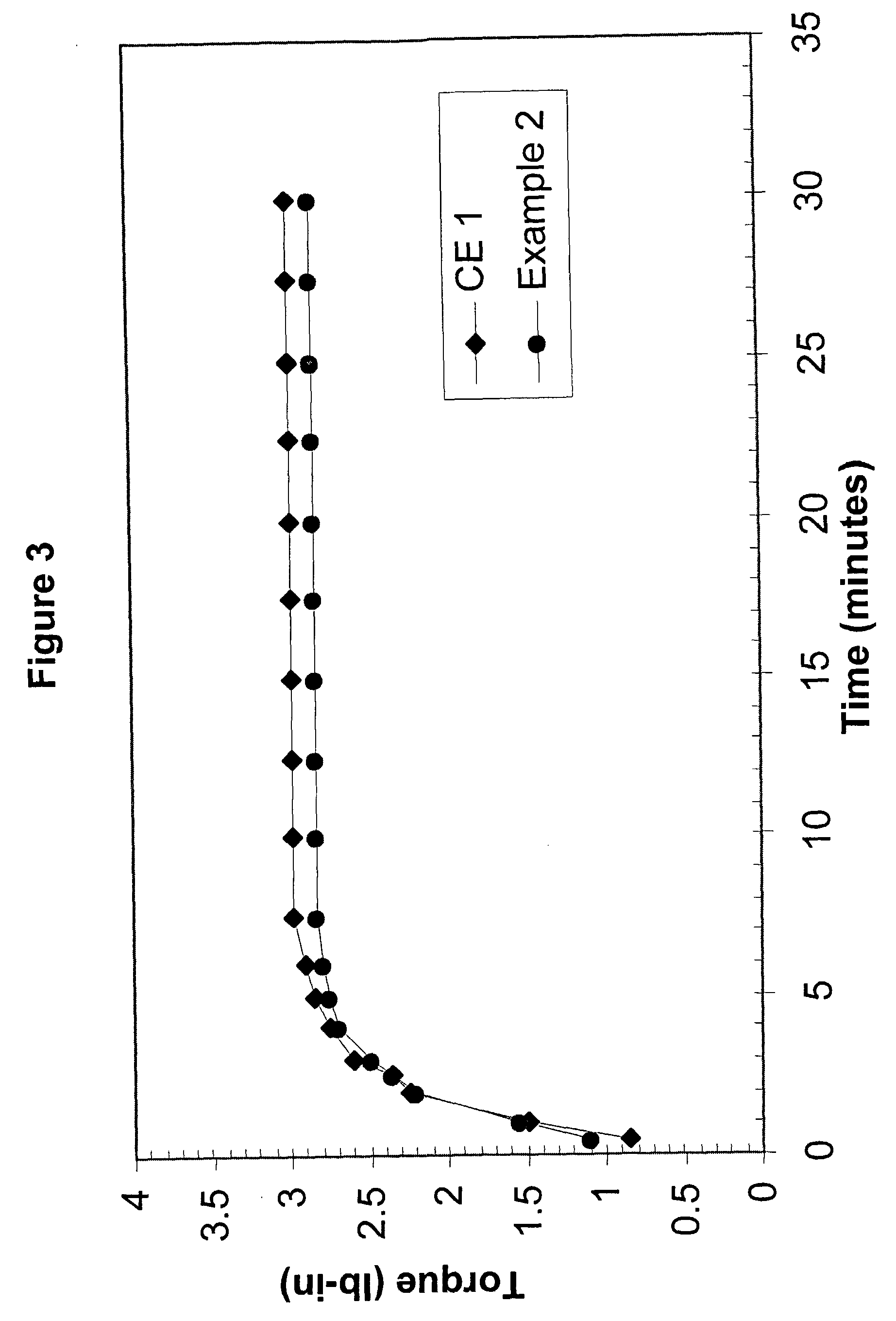Process for crosslinking free-radical crosslinkable polymers
a free-radical crosslinking and polymer technology, applied in the field of polymer systems, can solve the problems of long nominal crosslinking temperature profile time, poor melt processing properties, and premature crosslinking, and achieve excellent melt processing and physical properties, and poor melt processing properties
- Summary
- Abstract
- Description
- Claims
- Application Information
AI Technical Summary
Benefits of technology
Problems solved by technology
Method used
Image
Examples
examples
[0127] The following non-limiting examples illustrate the invention.
A Crosslinking-Temperature-Profile Modifier Exemplified
[0128] Comparative Example 1 and Example 2 were prepared with Affinity™ 8200 polyethylene, having a melt index of 5.0 grams per cubic centimeter and a density of 0.87 grams per cubic centimeter. Affinity™ 8200 polyethylene is available from The Dow Chemical Company.
[0129] Dicumyl peroxide (DiCup R), available from Geo Specialty Chemicals, was added to each composition in about 1.00 weight percent. The crosslinking-temperature-profile modifier was 4-hydroxy-TEMPO, commercially available from A. H. Marks. The 4-hydroxy-TEMPO was added to the Example 2 composition in about 0.20 weight percent. The remainder of each composition was the polyethylene resin. Both compositions were melt blended in a Brabender mixer.
[0130] For each evaluated composition, the MDR generated torque versus time data. At the set temperature, the MDR was set for a frequency of 100 cycles p...
example 28
Polyethylene Insulation Example 28 and Comparative Example 29
[0144] An example and a comparative example were prepared with a polyethylene-based insulation composition and DiCup R organic peroxide. The composition exemplifying the present invention also contained 4-hydroxy-TEMPO.
[0145] The polyethylene composition was the peroxide-containing HFDB-4202 tree retardant insulation composition, commercially available from The Dow Chemical Company. The dicumyl peroxide (DiCup R) was an organic peroxide and commercially available from Geo Specialty Chemicals. The 4-hydroxy-TEMPO was commercially available from A. H. Marks.
[0146] The amounts used to prepare Example 28 and Comparative Example 29 are shown in Table VI as weight percents.
TABLE VIComponentExample 28Comparative Example 29insulation composition99.35100.00DiCup R0.254-hydroxy-TEMPO0.40
[0147] The crosslinking kinetics of Example 28 and Comparative Example 29 were investigated using MDR at 140 degrees Celsius and 150 degrees Cel...
examples 36-38 (
Effect of High Melting Stabilizer)
[0153] Each of Examples 36-38 was prepared with Nordel™ 3722P ethylene / propylene / diene monomer pellets, 6.0 weight percent of the crosslinking-temperature-profile modifier 4-hydroxy-TEMPO, and 1.00 weight percent of DFDB-5410 BK. The amount of the ethylene / propylene / diene monomer pellets and the remaining components are specified in Table VII. The EPDM pellets contained a peroxide.
[0154] Nordel™ 3722P ethylene / propylene / diene monomer (EPDM) had <1% diene and a Mooney Viscosity of 20 at 125 degrees Celsius. It was commercially available from DuPont Dow Elastomers L.L.C. The 4-hydroxy-TEMPO was commercially available from A. H. Marks. The DFDB-5410 BK was a color masterbatch and commercially available from The Dow Chemical Company. The Sartomer SR 350 trimethylolpropanetrimethacrylate were available from Sartomer Company, Inc. The zinc stearate was commercially available from Baerlocher. All compositions were melt blended in a Brabender mixer.
TABLE...
PUM
| Property | Measurement | Unit |
|---|---|---|
| temperature | aaaaa | aaaaa |
| crosslinking temperature | aaaaa | aaaaa |
| crosslinking temperature | aaaaa | aaaaa |
Abstract
Description
Claims
Application Information
 Login to View More
Login to View More - R&D
- Intellectual Property
- Life Sciences
- Materials
- Tech Scout
- Unparalleled Data Quality
- Higher Quality Content
- 60% Fewer Hallucinations
Browse by: Latest US Patents, China's latest patents, Technical Efficacy Thesaurus, Application Domain, Technology Topic, Popular Technical Reports.
© 2025 PatSnap. All rights reserved.Legal|Privacy policy|Modern Slavery Act Transparency Statement|Sitemap|About US| Contact US: help@patsnap.com



